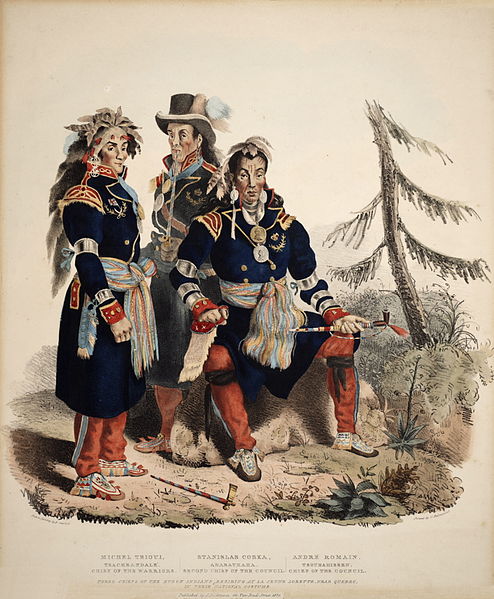The culture of Quebec emerged over the last few hundred years, resulting predominantly from the shared history of the French-speaking North American majority in Quebec. Québécois culture, as a whole, constitutes all distinctive traits – spiritual, material, intellectual and affective – that characterize Québécois society. This term encompasses the arts, literature, institutions and traditions created by Québécois, as well as the collective beliefs, values and lifestyle of Québécois. It is a culture of the Western World.
Notre-Dame Basilica, Montreal
The school and the convent of the Congregation of Our Lady of Good Council, the ghost town of Val-Jalbert, Saguenay-Lac-Saint-Jean
La chasse-galerie (1906) by Henri Julien, showing a scene from a popular Quebec folk legend.
An outdoor performance by Cirque du Soleil in Quebec City.
Quebec is one of the thirteen provinces and territories of Canada. It is the largest province by area and the second-largest by population. Much of the population lives in urban areas along the St. Lawrence River, between its most populous city, Montreal, and the provincial capital, Quebec City. Located in Central Canada, the province shares land borders with Ontario to the west, Newfoundland and Labrador to the northeast, New Brunswick to the southeast, and a coastal border with Nunavut; in the south it borders the United States.
A depiction of Jacques Cartier by Théophile Hamel, 1844
Three Huron-Wyandot chiefs from Wendake. New France had largely peaceful relations with the Indigenous people, such as their allies the Huron. After the defeat of the Huron by their mutual enemy, the Iroquois, many fled from Ontario to Quebec.
Montcalm leading his troops into battle. Watercolour by Charles William Jefferys.
The Battle of Saint-Eustache was the final battle of the Lower Canada Rebellion.








